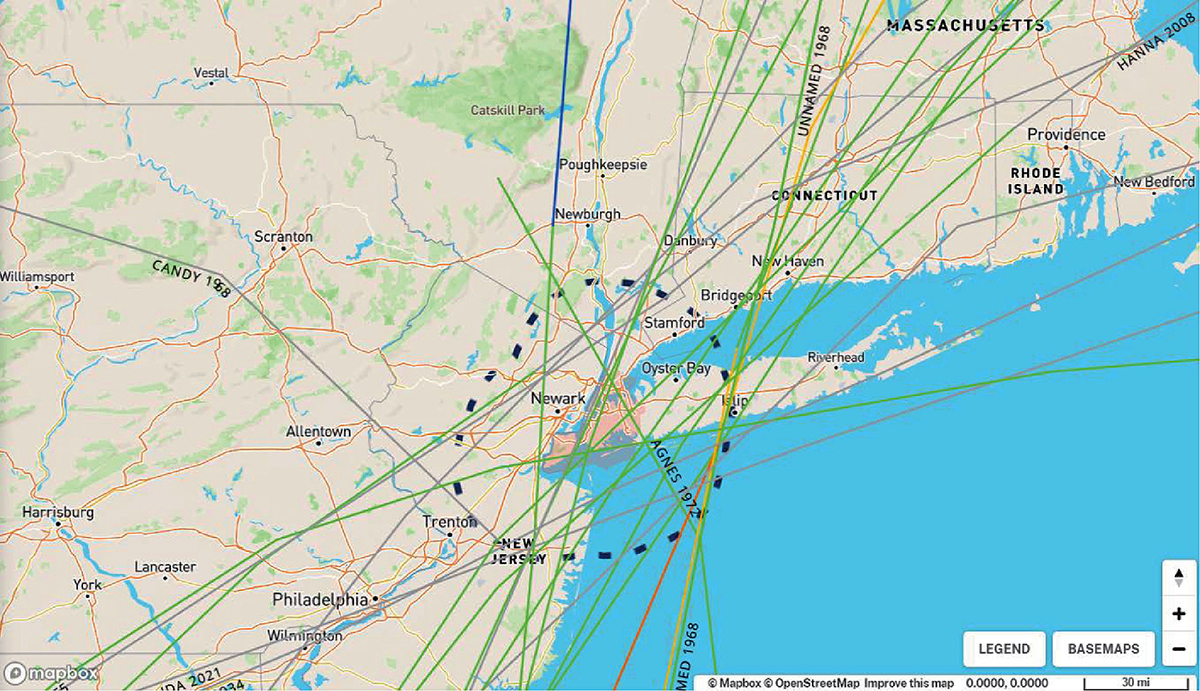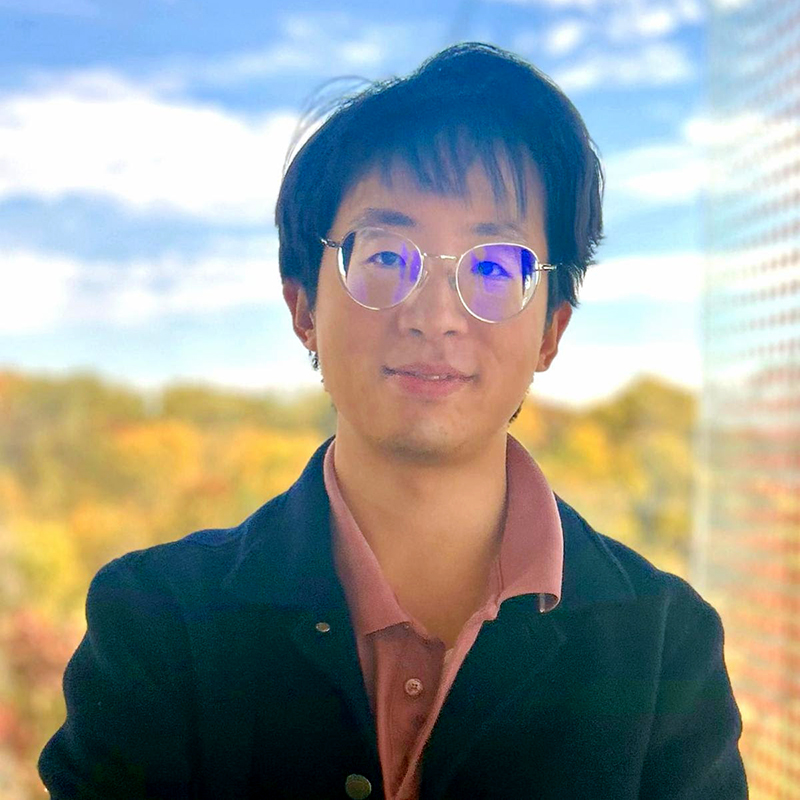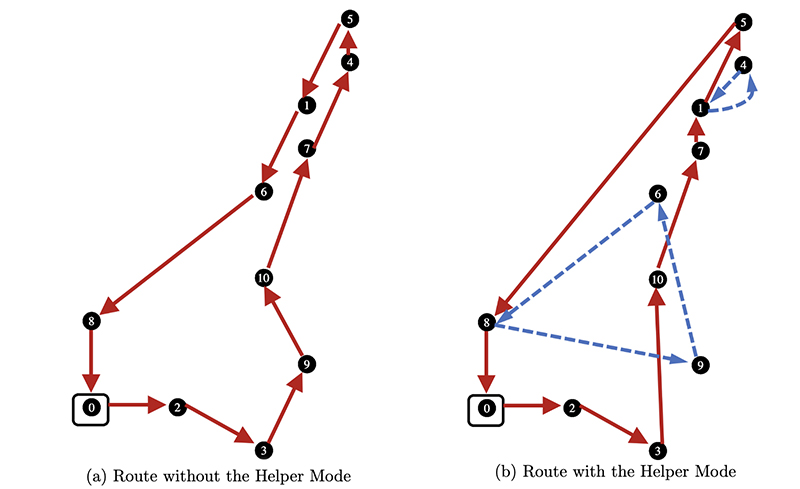News Story
New formulas proposed for assessing aging civil infrastructure

Historical tracks of hurricanes that struck New York City from 1902 to 2021. (Reproduced from https://coast-noaa-gov.proxy-um.researchport.umd.edu/hurricanes). (Fig. 7 from the paper; click for larger view)
During their service lives, civil structures and infrastructures are often subjected to the influences of performance deterioration and multiple natural or human-caused hazards like hurricanes, earthquakes, floods and fires. As they age, they may suffer from damage or even failure as a result of external loads. This often triggers the ripple effects of socio-economic losses. Structural performance, measured by strength, stiffness, etc., also degrades during the service life.
Without repair or replacement, structural safety eventually reaches an unacceptable level. For example, the ASCE’s America’s Infrastructure Report Card 2021 reports there are more than 617,000 bridges in the United States, 42% of which have served for at least 50 years. Some 7.5% of bridges are considered structurally deficient—in “poor” condition.
Because threatening hazards occur somewhat randomly, it is difficult or even impossible to exactly predict their influences on structures. That is why civil engineers use a probability-based framework to evaluate the safety and serviceability of in-service structures. Researchers use powerful structural reliability and resilience assessment tools to quantify a structure’s ability to withstand environmental or operational attacks.
New work by ISR-affiliated Professor Bilal Ayyub (CEE), director of the Center for Technology and Systems Management, and two of his Australian colleagues, proposes closed-form formulas for time-dependent reliability and resilience assessment of aging structures subjected to multiple hazards.
Time-dependent reliability and resilience of aging structures exposed to multiple hazards in a changing environment appears in the September 2022 issue of the Elsevier journal, Resilient Cities and Structures. It was written by Ayyub along with Cao Wang and Aziz Ahmed of the University of Wollongong, Australia.
The paper explicitly incorporates the joint impacts of nonstationarities in loads—reflecting the potential impacts of changing environments—in multiple hazards, and the deterioration of structural performance. The authors use a copula function to model the correlation between structural resistances and capacities associated with different hazard types. They discover that under the context of multiple hazards and aging effects, time-dependent resilience takes a generalized form of time-dependent reliability. They also show that structural reliability is a special case of structural resilience in the presence of multiple hazards; reliability does not account for the post-hazard recovery process.
The authors’ proposed formulas can be used to guide the adaptive design of structures, with strategies identified across a range of possible future service conditions. They show:
• In the presence of multiple hazards, the structural resilience takes a generalized form of structural reliability, as the former additionally considers the post-hazard recovery processes. If the structure is non-repairable, the time-dependent resilience and reliability become mathematically identical.
• Considering the impact of a single load type alone would unavoidably underestimate the structural failure probability and nonresilience, if the structure is subjected to the joint impact of multiple hazards.
• Time-dependent reliability and resilience are dependent on the selection of copula function for structural resistances.
• The proposed formulas for structural reliability and resilience can be used in structural adaptive design and risk management. To achieve a predefined level of structural reliability or resilience, the structural resistances (in the presence of multiple hazards) are to be enhanced to counter the impact of load nonstationarity in a changing environment.
Published December 14, 2022





